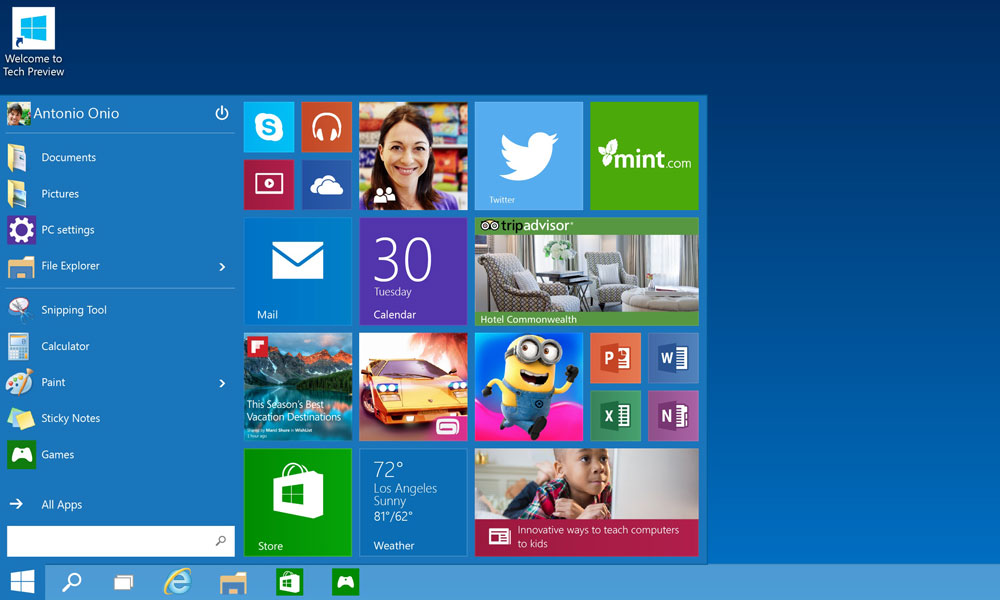
Wednesday Buzz: The Start Menu Is Back, Windows Users
Microsoft's announcement of a new version of Windows isn't a big surprise, but its name—Windows 10, skipping version 9 entirely—certainly is. Also: considerations for accessible meetings.
Last time, Microsoft messed with success and drew a lot of haters. The company’s learned its lesson.
Moving away from the bold touch-focused reboot that came with Windows 8, the latest iteration of the operating system—which is skipping version 9, in case you didn’t notice—nonetheless incorporates some of the lessons from the reaction to its predecessor. Short version: The Start Menu, which had been a stalwart of Windows since the mid-1990s, is making a grand reappearance.
(Microsoft ended up bringing the start button back for Windows 8.1, but not the menu.)
But just because the menu is back doesn’t mean the flair of Windows 8 is all gone.
“Microsoft has done a U-turn here, but it’s also considered the way it can modernize its start menu, and it appears to have paid off,” writes The Verge‘s Tom Warren. “It’s customizable enough that you can resize it, pin traditional and modern apps, or simply have it match the color of your desktop wallpaper. These hints of Windows 8 shine through directly in the Windows 10 start menu, and although the overall interface feels like the Windows desktop, the start menu feels truly new and yet familiar at the same time.”
In case you want to test it out, the company will launch a technical preview of the operating system today.
Get Accessible
Another great resource for planning accessible meetings. http://t.co/iuhCSbEpac #assnchat #mpi #pcma #sgmp #apc14nationalharbor
— Joan Eisenstodt/she/her/they (@JoanEisenstodt) September 30, 2014
Accessibility matters, especially for your event attendees, some of whom might have disabilities that need to be accommodated.
“During a lifetime, most everyone is likely to experience a disability, whether due to aging, a chronic disease, illness, or an injury,” the American Bar Association’s Commission on Disability Rights notes in a PDF toolkit. “Every reasonable effort must be made to ensure that no person with any type of disability is prevented or discouraged from attending—and from fully and equally participating in—the meeting or event, or any part of it, based on any accessibility issue.”
The toolkit outlines a wide array of considerations that meeting planners should keep in mind, including messaging, locations, promotion, and even the minimum font sizes presenters should use.
“Planning fully accessible meetings and events might at first glance seem overwhelming, but with proper planning can become second nature,” the toolkit adds. (ht @JoanEisenstodt)
Other good reads
Social density is important in your online community, according to Socious’ Katie Bapple.
In case you’re curious, Wired explains the tech powering the recent spate of retail hacks.
Tech and marketing need to work together more than ever, but according to a new study, enterprise marketers are still struggling to integrate the two.
(Microsoft)






Comments